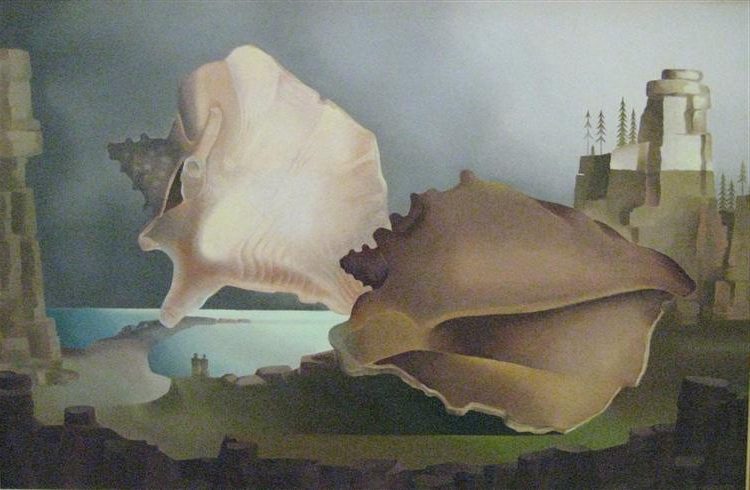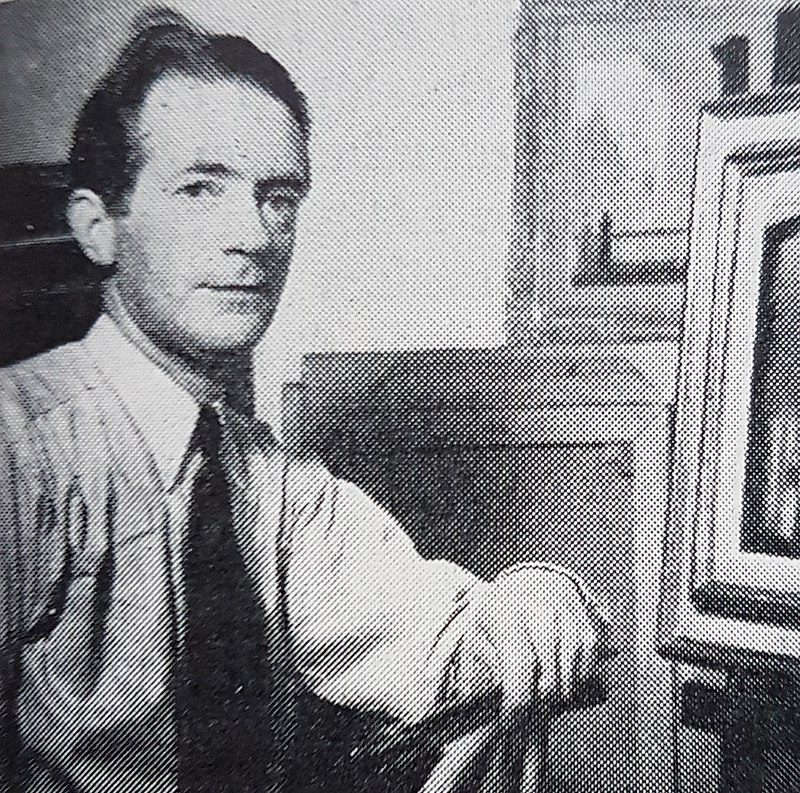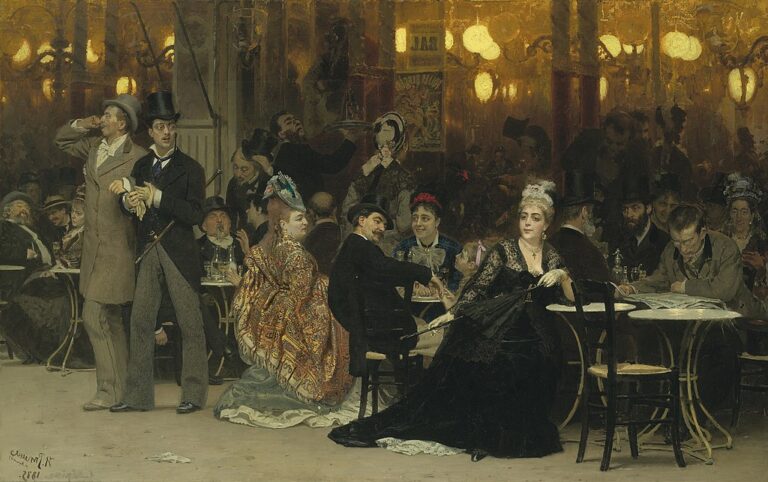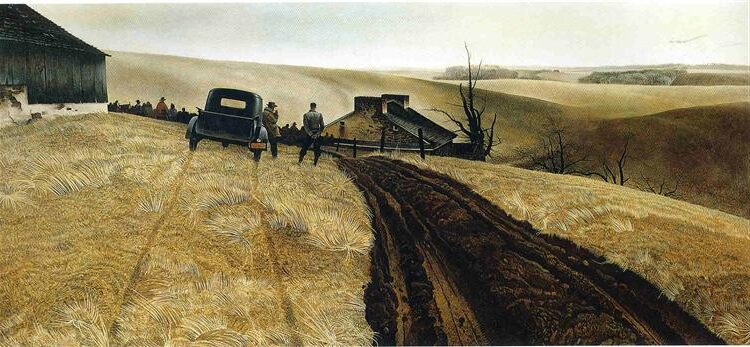Sven Jonson Painter: Swedish Modernist’s Lasting Legacy
Born: 28 September 1902, Halmstad, Sweden
Death: 17 March 1981, Söndrum, Sweden
Art Movement: Surrealism
Nationality: Swedish
Influenced By: Gösta Adrian-Nilsson
Institution: Carl Wilhelmson’s painting school and The Académie Scandinave Maison Watteau
Sven Jonson Painter: Swedish Modernist’s Lasting Legacy
Life and Career of Sven Jonson
Sven Jonson was a Swedish artist who made important contributions to the surrealist movement. He developed his unique style over decades of work and became known for his dreamlike paintings.
Early Years and Education
Sven Jonson was born on September 28, 1902 in Halmstad, Sweden. He grew up in a family of sailors but became interested in art from a young age.
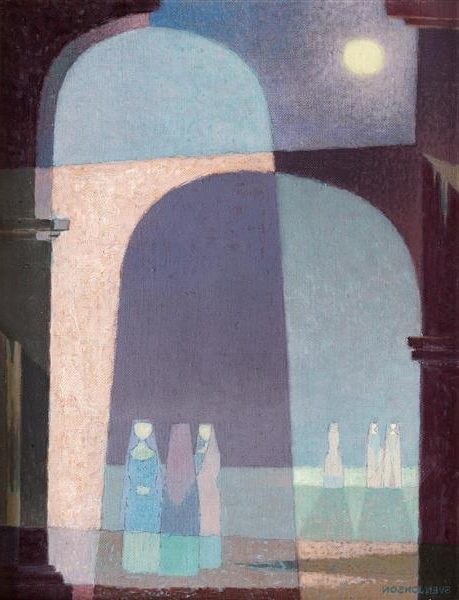
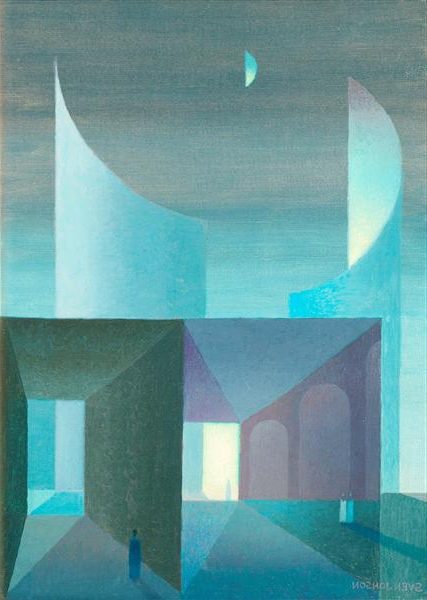
In 1922, Jonson took his first steps to become a professional artist. The next year, he formed an art group called De Unga (The Young) with Esaias Thorén. They held their first exhibition in Halmstad in 1924.
From 1925 to 1926, Jonson studied at Carl Wilhelmson’s painting school in Stockholm. This formal training helped shape his early artistic style.
Major Works and Contributions to Art
In the 1930s, Jonson’s art took on a more surrealist style. He created dreamlike paintings with strange objects and scenes. Some of his most famous works came from this period.
One key painting was “Komposition med kors” (Composition with Cross) from 1929. It shows Jonson’s shift toward surrealism.
Jonson was part of an important Swedish art movement in the 1930s. He worked with other artists to bring new ideas to Swedish painting. His unique style helped make surrealism popular in Sweden.
Later Years and Legacy
Jonson kept painting and creating art for many decades. He had a long, successful career in Sweden.
His work is now in many Swedish museums. Art experts see him as an important figure in 20th century Swedish art. Jonson helped bring modern art styles to Sweden.
Sven Jonson died on March 17, 1981 at the age of 78. He left behind a large body of work that is still studied and admired today.
Artistic Style and Techniques
Sven Jonson’s art blended surrealism with nature-inspired elements. He used geometric shapes and lighting to create unique compositions.

I väntan på vind (1976) by Sven Jonson
Influence of Surrealism and Nature
Jonson’s work showed clear surrealist influences. He often painted dream-like scenes with strange objects and settings.
Nature played a big role in his art. He used plants, animals, and landscapes in unexpected ways. This mix of real and unreal created a sense of mystery in his paintings.
Jonson liked to explore themes of solitude in his work. He often painted lone figures or objects in empty spaces. This added to the dream-like feel of his art.
Use of Geometric Composition and Lighting
Geometric shapes were a key part of Jonson’s style. He used circles, squares, and triangles to structure his paintings. This gave his work a sense of order and balance.
Lighting was another important tool for Jonson. He used light and shadow to create depth and mood.
Bright areas drew the eye to key parts of the painting.
Jonson often painted sunsets. The changing light let him play with color and form. He used warm oranges and reds to create a sense of harmony in these works.
His use of geometry and light helped Jonson create striking, memorable images. These techniques became a signature part of his artistic style.
Selected Masterpieces Explained
Sven Jonson created many striking surrealist paintings that showcase his unique artistic vision. His works blend dreamlike imagery with symbolic elements to explore themes of isolation, nature, and the subconscious mind.
Analysis of ‘Det Döda Skeppet’
‘Det Döda Skeppet’ (The Dead Ship) is one of Jonson’s most famous paintings. It shows a large ship stranded in a barren landscape. The ship’s hull is cracked open, revealing skeletal remains inside.
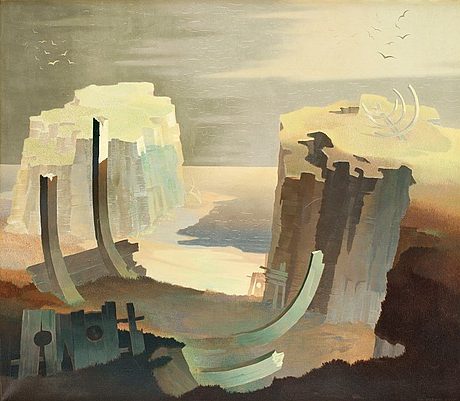
Det döda skeppet (1940) by Sven Jonson
Jonson uses muted colors and stark contrasts to create an eerie atmosphere. The painting symbolizes decay and the passage of time. The abandoned ship represents lost hopes and forgotten dreams.
The barren setting adds to the sense of isolation. Small figures in the distance highlight the vast scale of the landscape and ship.
‘Morgon’ and ‘Den Vaknade Vidden’ in Context
‘Morgon’ (Morning) and ‘Den Vaknade Vidden’ (The Awakened Expanse) showcase Jonson’s skill with landscapes. Both paintings depict expansive natural scenes with surreal elements.
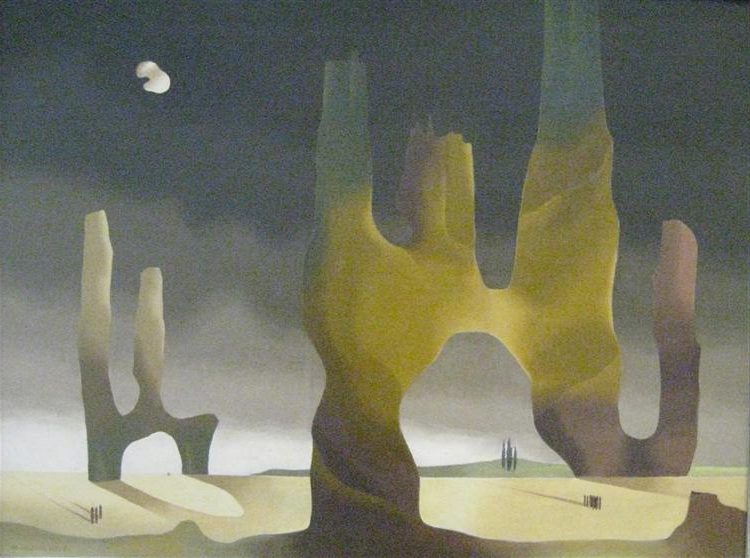
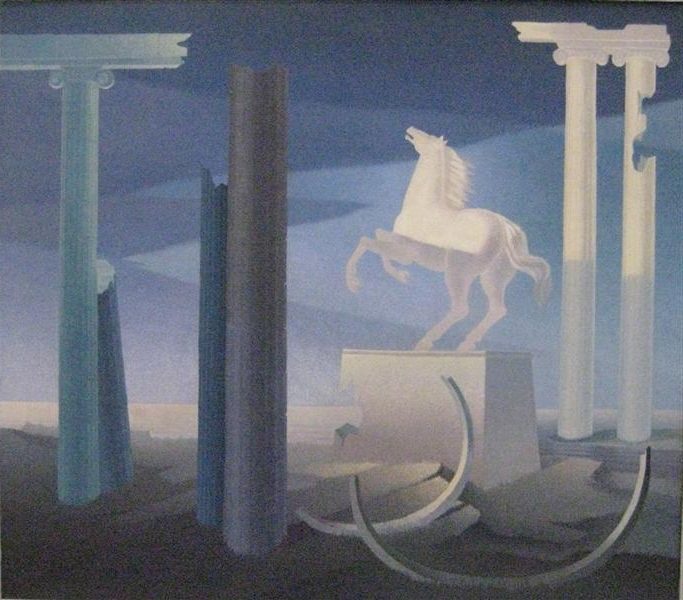
‘Morgon’ shows a misty dawn landscape with strange rock formations. Jonson uses soft pinks and blues to create a dreamy mood. The rocks seem alive, hinting at hidden consciousness in nature.
‘Den Vaknade Vidden’ features a wide snowy plain. Odd shapes rise from the snow, blurring the line between natural and artificial. The title suggests an awakening or revelation in this vast space.
These works reflect Jonson’s interest in the mystery of the natural world. They invite viewers to see familiar landscapes in new, imaginative ways.
Exploring ‘Nattlig Vision’ and ‘The Blue Hat’
‘Nattlig Vision’ (Nocturnal Vision) and ‘The Blue Hat’ demonstrate Jonson’s use of symbolic imagery. Both paintings blend realistic and fantastical elements to create thought-provoking scenes.
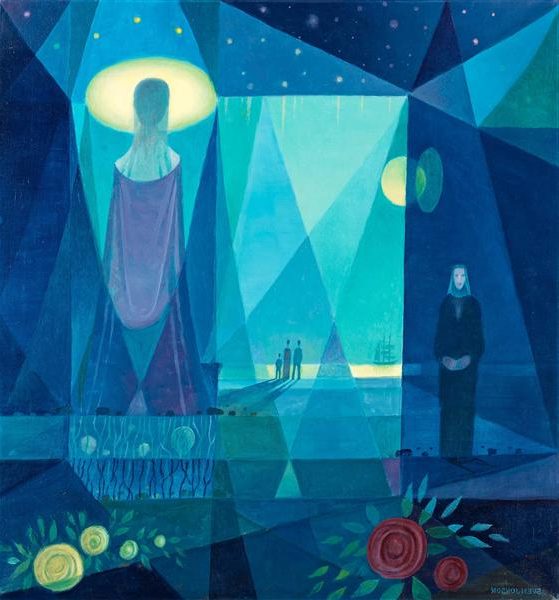
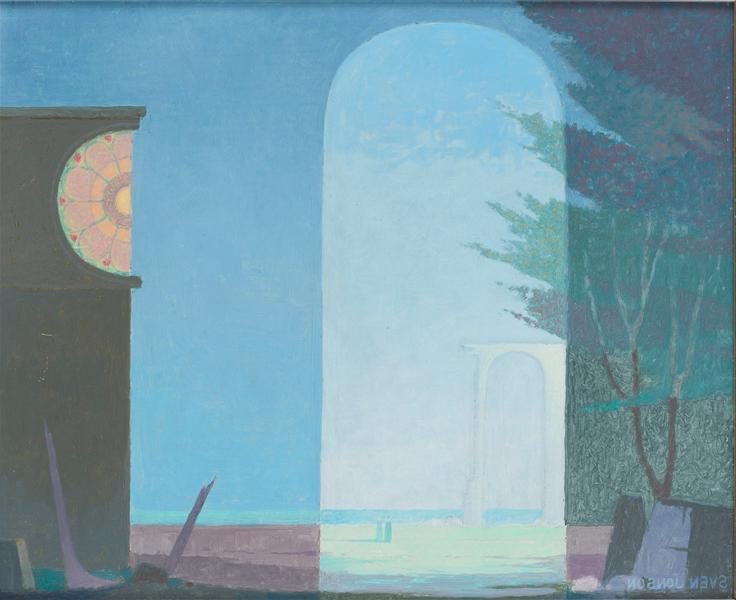
‘Nattlig Vision’ depicts a nighttime landscape with floating objects and distorted perspectives. Strange symbols and shapes populate the sky. Jonson uses deep blues and blacks to create a mysterious mood.
‘The Blue Hat’ shows a large blue hat hovering over a stark landscape. The hat seems to glow from within. Small figures stand beneath it, gazing upward. This painting plays with scale and symbolism.
These works invite multiple interpretations. They reflect Jonson’s interest in dreams, the unconscious mind, and hidden meanings in everyday objects.
Frequently Asked Questions
Sven Jonson was a Swedish painter who made his mark on 20th century art. He worked in various styles and had a lasting impact on the art world.
What notable art movements was Sven Jonson associated with?
Sven Jonson was linked to Swedish Surrealism. He was part of the Halmstad Group, which brought modernist ideas to Swedish art in the 1920s and 1930s.
Can you list some of Sven Jonson’s most influential works?
One of Jonson’s key works is “Theme and Variations II” from 1954. He also painted “Kvällssol över klippor och vatten” (Evening Sun over Cliffs and Water) in 1964.
What techniques and mediums did Sven Jonson commonly use in his paintings?
Jonson mainly worked with oil paints on canvas. He often used surrealist techniques to create dreamlike scenes and abstract forms in his art.
How did Sven Jonson contribute to the development of modern art in his country?
Jonson helped bring new ideas to Swedish art. As part of the Halmstad Group, he introduced surrealist and modernist styles to Sweden’s art scene in the early 20th century.
Are there any significant exhibitions that have featured Sven Jonson’s paintings?
The Museum of Modern Art (MoMA) in New York has shown Jonson’s work. His paintings have also been featured in Swedish galleries and museums.
What impact did Sven Jonson have on future generations of artists?
Jonson’s surrealist style and his role in the Halmstad Group inspired later Swedish artists. He helped pave the way for more experimental and abstract art in Sweden.

